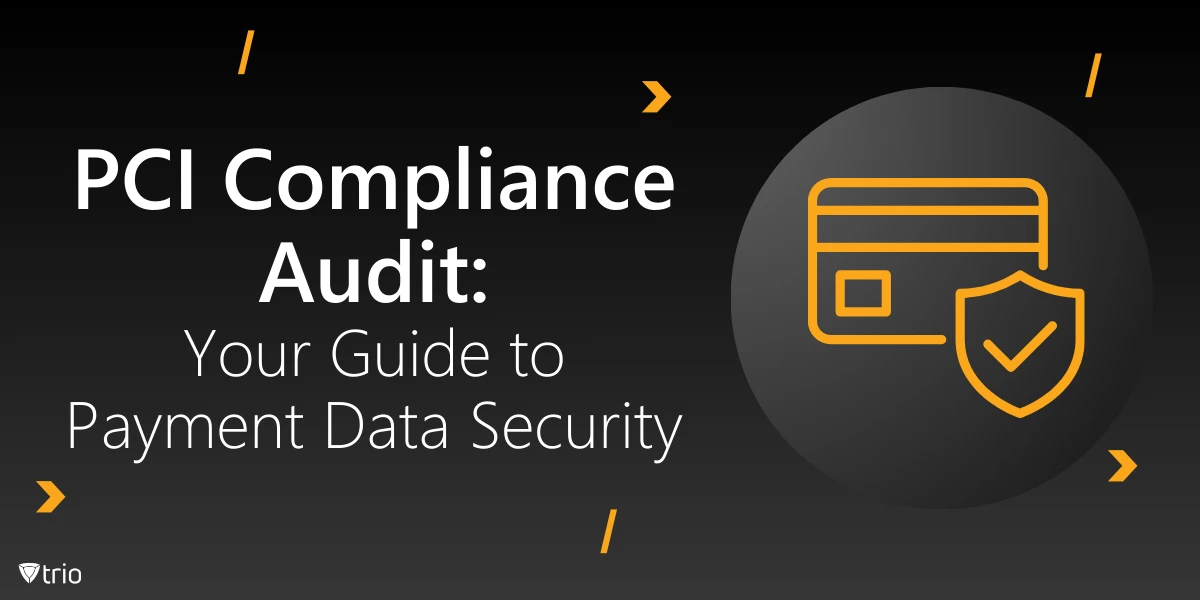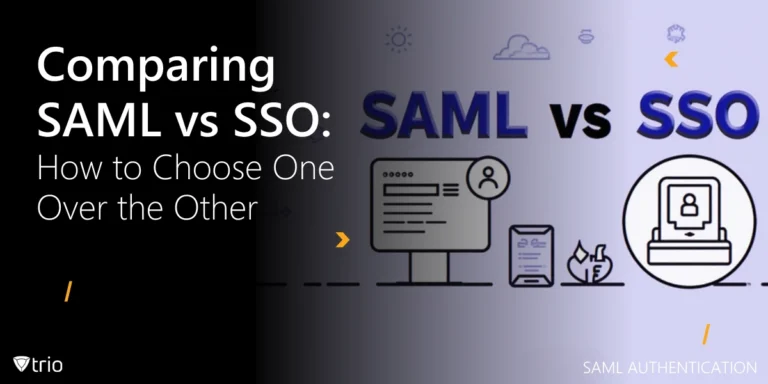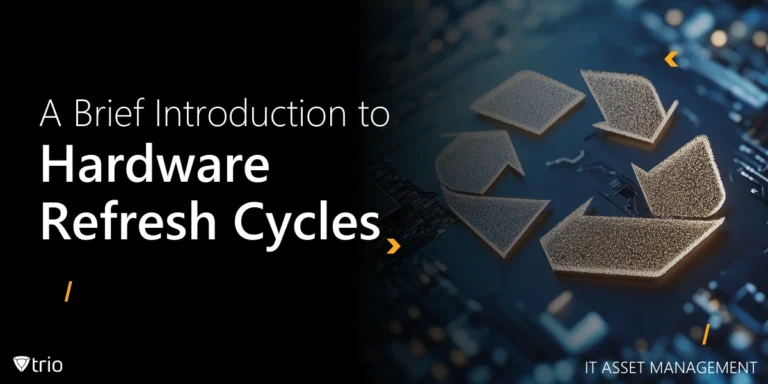For any business that stores, processes, or transmits credit card data, complying with IT compliance standards like Payment Card Industry Data Security Standard (PCI DSS) is essential. A PCI compliance audit is not only crucial for protecting sensitive data but also for maintaining trust with customers and avoiding costly penalties. In this guide, we’ll walk through the PCI compliance audit process, outline PCI audit requirements, explore the role of software solutions, and demonstrate how Trio can support your PCI compliance efforts.
Understanding the Meaning of PCI Compliance Audit
A PCI compliance audit is an in-depth review to ensure that an organization meets the PCI DSS standards. These standards are established by the Payment Card Industry Security Standards Council (PCI SSC) and apply to any company handling cardholder data. The audit aims to evaluate the company’s security controls, vulnerability scanning processes, and access restrictions to cardholder data.
For organizations, the PCI compliance audit means validating that they not only implement required security measures but also continuously monitor and improve these defenses. This isn’t a one-time check; rather, it’s an ongoing responsibility that ensures compliance with PCI DSS and sustains customer trust.
The PCI DSS categorizes merchants into four compliance levels based on the annual volume of card transactions processed. Level 1, the most stringent level, applies to merchants handling over 6 million transactions per year. Level 2 is for merchants processing between 1 and 6 million transactions, Level 3 for those processing between 20,000 and 1 million, and Level 4 for merchants processing fewer than 20,000 transactions. While Level 1 merchants face the most rigorous requirements, all levels must adhere to the PCI DSS standards.
Building a PCI Compliance Audit Plan
Creating a well-structured PCI compliance audit plan is the foundation for a successful assessment. This plan should be comprehensive and include key components, such as an overview of the audit’s scope, the schedule for each phase, and assigned roles and responsibilities. The goal is to cover every aspect of the card industry data security requirements and address how your organization stores, processes, or transmits credit card information.
A solid PCI audit plan also includes detailed procedures for vulnerability scanning and monitoring access to cardholder data. Establishing these protocols early on helps maintain compliance throughout the year and makes it easier to pass the official audit when the time comes. Making use of automated compliance software can streamline these steps, allowing businesses to proactively detect and fix issues as part of a proactive compliance strategy.

PCI Audit Requirements: A Deep Dive into the 12 Key Standards
The PCI DSS is divided into several categories, each addressing a specific security domain, mirroring security best practices. According to PCI DSS, to ensure compliance, organizations must adhere to twelve key requirements, categorized into the six primary domains:
Build and Maintain a Secure Network and Systems
This category focuses on establishing a secure network infrastructure to protect cardholder data from unauthorized access.
- Requirement 1: Install and maintain a firewall configuration to protect cardholder data.
- Requirement 2: Do not use vendor-supplied defaults for system passwords and other security parameters.
Protect Cardholder Data
This category focuses on protecting cardholder data, both at rest and in transit.
- Requirement 3: Protect stored cardholder data.
- Requirement 4: Encrypt transmission of cardholder data across open, public networks.
Maintain a Vulnerability Management Program
This category focuses on identifying, assessing, and mitigating vulnerabilities in systems and applications.
- Requirement 5: Protect all systems against malware and regularly update anti-virus software or programs.
- Requirement 6: Develop and maintain secure systems and applications.
Implement Strong Access Control Measures
This category focuses on implementing strong access controls to protect cardholder data.
- Requirement 7: Limit access to cardholder data to authorized personnel on a need-to-know basis.
- Requirement 8: Identify and Authenticate Access to System Components.
- Requirement 9: Restrict physical access to cardholder data.
Regularly Monitor and Test Networks
This category focuses on monitoring and testing networks to identify and respond to security threats.
- Requirement 10: Track and monitor all access to network resources and cardholder data.
- Requirement 11: Regularly test security systems and processes.
Maintain an Information Security Policy
This category focuses on developing, implementing, and maintaining an information security policy.
- Requirement 12: Maintain a policy that addresses information security for all personnel.
These 12 PCI DSS requirements work together to create a strong security system that protects cardholder data. By following these rules, businesses can keep customer information safe and avoid penalties for not complying with security standards. These requirements can also be used as a PCI compliance audit checklist to help businesses stay organized during a PCI compliance audit.
For organizations handling a broader range of sensitive data, such as healthcare information or personal data covered by regulations like CCPA (California Consumer Privacy Act), adhering to additional standards like HIPAA and NIST can further enhance security posture.
![pci compliance audit checklist] [three black phones with a checkmark and three credit cards on it](https://www.trio.so/blog/wp-content/uploads/2024/11/pci-compliance-audit-checklist.webp)
Navigating the PCI Audit Process with Software Solutions
Implementing PCI compliance audit software can streamline the auditing process and minimize manual work. These tools can automate many aspects of the PCI compliance audit, including tracking vulnerability scanning, managing assessment questionnaires (SAQ), and ensuring ongoing compliance monitoring.
For many businesses, PCI compliance audit software also simplifies data collection and reporting. With built-in features to generate compliance reports and maintain a record of all security controls, audit software makes it easier to comply with PCI DSS requirements and respond swiftly to potential compliance gaps.
Compliance training best practices are essential to effective PCI compliance. Training staff to recognize vulnerabilities and understand access control protocols supports long-term compliance, while compliance automation helps reduce human error and enforce security standards consistently across the organization.
Trio MDM: Your Partner in Simplifying PCI Compliance Audits
Ensuring PCI DSS compliance requires continuous monitoring, access restrictions, and comprehensive data security measures. Trio, a mobile device management (MDM) solution, can help support these requirements by offering tools to manage and secure devices that access payment systems or handle sensitive data. Trio’s features align well with PCI DSS requirements, such as enforcing security controls, restricting access to cardholder data, and providing real-time monitoring.
Trio’s MDM solution simplifies PCI compliance by automating much of the management process and providing clear insights into your security posture. By deploying Trio, your organization can confidently meet PCI DSS standards while improving efficiency and reducing the workload on IT teams. Ready to simplify your PCI compliance journey? Try Trio’s free demo today!
Conclusion
Preparing for a PCI compliance audit may seem daunting, but with a structured plan, a thorough checklist, and the right tools, businesses can meet the Payment Card Industry Data Security Standard (PCI DSS) and secure their customers’ sensitive payment data. Trio’s MDM solution makes the process smoother, ensuring compliance without unnecessary complexity.
Get Ahead of the Curve
Every organization today needs a solution to automate time-consuming tasks and strengthen security.
Without the right tools, manual processes drain resources and leave gaps in protection. Trio MDM is designed to solve this problem, automating key tasks, boosting security, and ensuring compliance with ease.
Don't let inefficiencies hold you back. Learn how Trio MDM can revolutionize your IT operations or request a free trial today!




